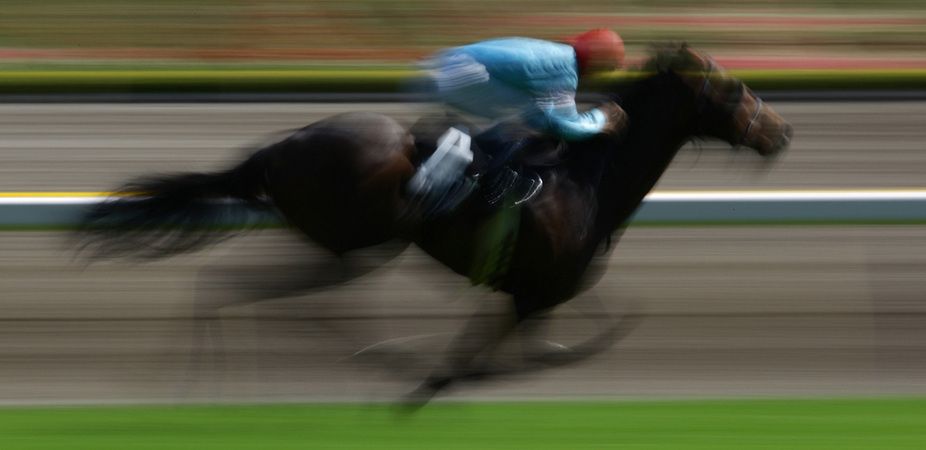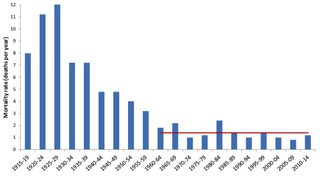
Too Many Jockeys Die Racing Horses (Op-Ed)

This article was originally published on The Conversation. The publication contributed this article to Live Science's Expert Voices: Op-Ed & Insights.
Horse racing claimed the lives of three jockeys recently – two in Australia and one in the United States – and some prominent industry professionals have openly claimed that deaths in racing are part of the sport. But changes made in the past to the racing industry have led to a reduction in jockey deaths – and more could be done now.
The latest tragedy was young jockey Caitlin Forrest who died last month in hospital after after a four-horse fall at Murray Bridge, in South Australia. This followed only a day after jockey Carly-Mae Pye’s life support was turned off after falling during a jump out at Callaghan Park in Queensland.
Thoroughbred Racing South Australia chief executive Jim Watters was quoted soon after Forrest’s death saying:
Racing is one of those sports where there are dangers […] early indications are it was just a tragic accident.
Former jockey John Letts, commenting after Forrest’s death and that of other Australian jockeys, added:
[…] we just can’t stop it, it’s something that’s just going to happen.
In the last 15 years of my time in the racing industry I heard similar sentiments from many others. While they may be sympathetic to jockeys and their family and friends, this attitude does not encourage much-needed change. Rather, it dangerously fosters a sense of complacency that these tragic incidents cannot be prevented.
The numbers on rider deaths
It is true that falls and injuries to jockeys are common with about one fall for every 240 race rides, and one-third of those falls resulting in a substantive injury in Australia.
Sign up for the Live Science daily newsletter now
Get the world’s most fascinating discoveries delivered straight to your inbox.
It is also true that the sport is considered to be one of the more dangerous occupations, stabilising at about 1.4 deaths per year nationally. Racing has certainly become significantly safer than it was 50 years ago.

This in itself is proof that improvements to protective equipment and policies and procedures, among other things, can contribute to reduced rates of jockey falls, injuries and fatalities.
But stewards’ inquiries into individual incidents are unlikely to result in findings that are useful. Rather it is the collation and analysis of all of these incidents that will help us to detect patterns in the data that may lead to the identification of modifiable risk factors.
Are female jockeys more at risk?
There are multiple factors that contribute to deaths in racing, but does the research support the recent speculation by some that there is a higher risk of injury to female jockeys?
It is the case that female jockeys have been found to have a marginally higher fall rate than male jockeys, but this finding was confined only to female jockeys who rode horses younger than four years of age in open and restricted races.
There was no increase in fall rates for female jockeys riding in other, more common race grades. Furthermore, a study of apprentice and early-career jockeys found no significant differences in fall rates between males and females.
The piece of science missing here is the absence of medically-assessed outcomes of racing falls. In a yet-to-be published study, by our team at the Menzies Research Institute Tasmania, we found there were no significant differences between males and females in regards to the average costs, and the incidence of, flat racing jockey insurance and workers’ compensation claims per 100 falls.
Just to be clear, a jockey’s sex has not been proved to be a major risk factor.
Having said that, sex of the jockey must not be the focus in analysing the recent incidents because both Australian jockey deaths mentioned above were a result of the horse they were riding breaking down. A horse breakdown is not something the jockey can control.
A recent study funded by the California Horse Racing Board identified catastrophic injury or sudden death of the horse as the most common reason for a jockey fall in Thoroughbred (29%) and Quarter Horse (44%) racing.
About two-thirds of such falls result in injury of the jockey, and this proportion is significantly more than for jockey falls caused by other reasons.
This is likely because when a horse sustains a catastrophic injury or sudden death and collapses, the jockey falls with the horse and is thus at greater risk of suffering a serious injury – while also posing a threat to following horses and their jockeys.
Preventing the injuries
Horse breakdowns are preventable. In Californian postmortem studies, about 90% of racehorse breakdowns have shown evidence of pre-existing pathology related to the fatal injury.
In Australia there is also significant research already being undertaken on risk factors for racehorse injury, and improvements in this area will reduce jockey injuries and deaths.
Other factors that have been identified as contributing to an increased rate of jockey falls and injuries include:
- jockey inexperience, especially when combined with riding less accomplished horses
- faster/ drier track conditions
- shorter distance races
- bad weather conditions.
Interestingly, large field sizes such as that for the Melbourne Cup are not associated with an increase in jockey falls.
Only with further research and the determination to improve the sport’s safety, will we identify and implement evidence-based strategies to improve racing in the future and ultimately reduce the risks for both jockey and horse.
Dr. Peta L. Hitchens has previously received funding from the California Horse Racing Board, WorkCover Tasmania, TOTE Tasmania, Betfair Australasia, and Tasmanian Thoroughbred Racing Council (now Tasmanian Racing Board).
This article was originally published on The Conversation. Read the original article. Follow all of the Expert Voices issues and debates — and become part of the discussion — on Facebook, Twitter and Google +. The views expressed are those of the author and do not necessarily reflect the views of the publisher. This version of the article was originally published on Live Science.












